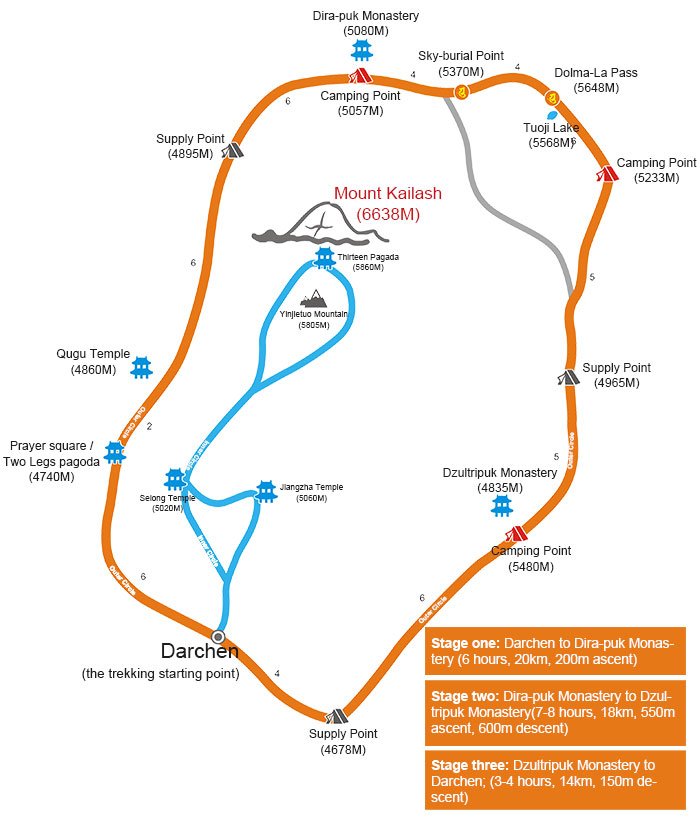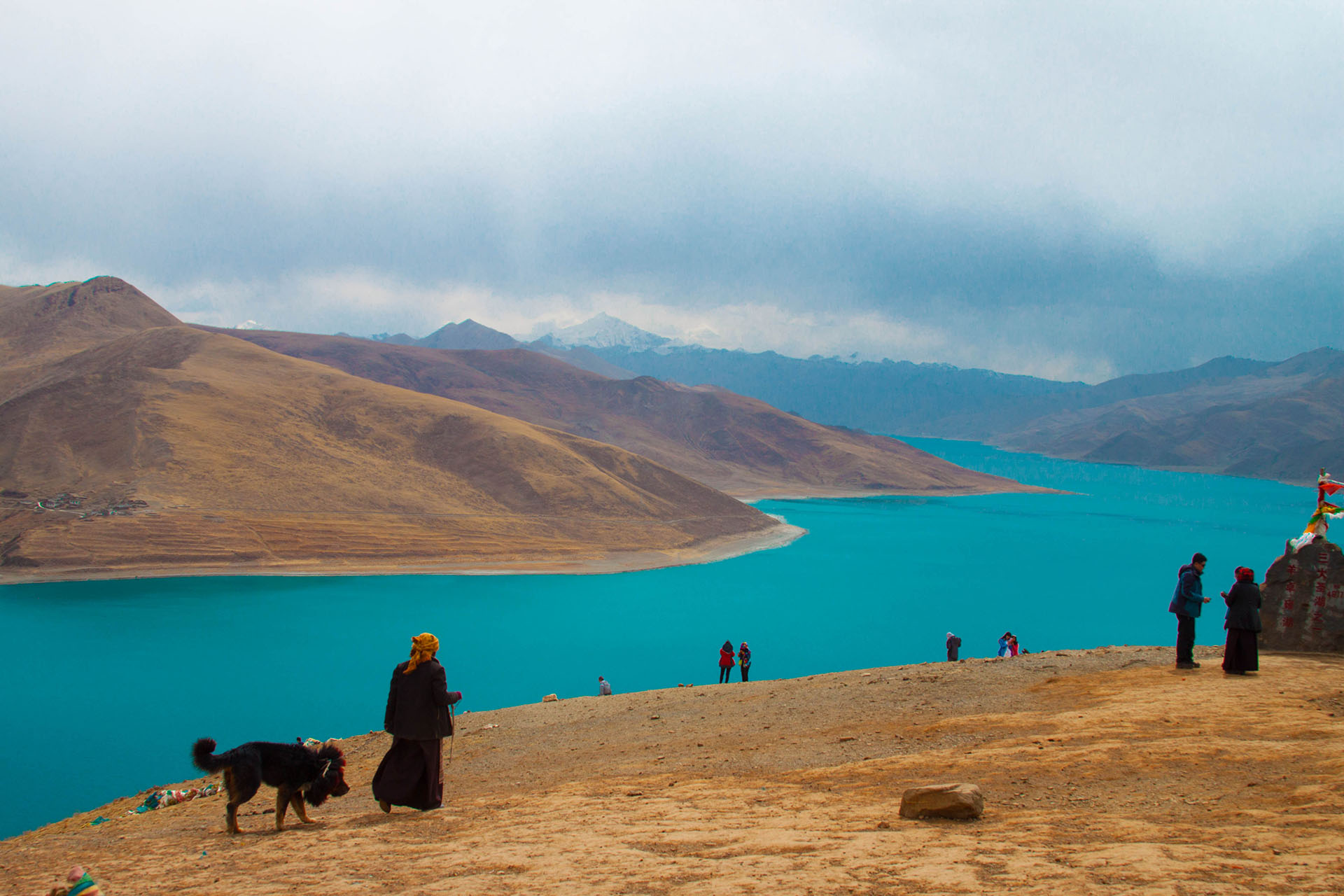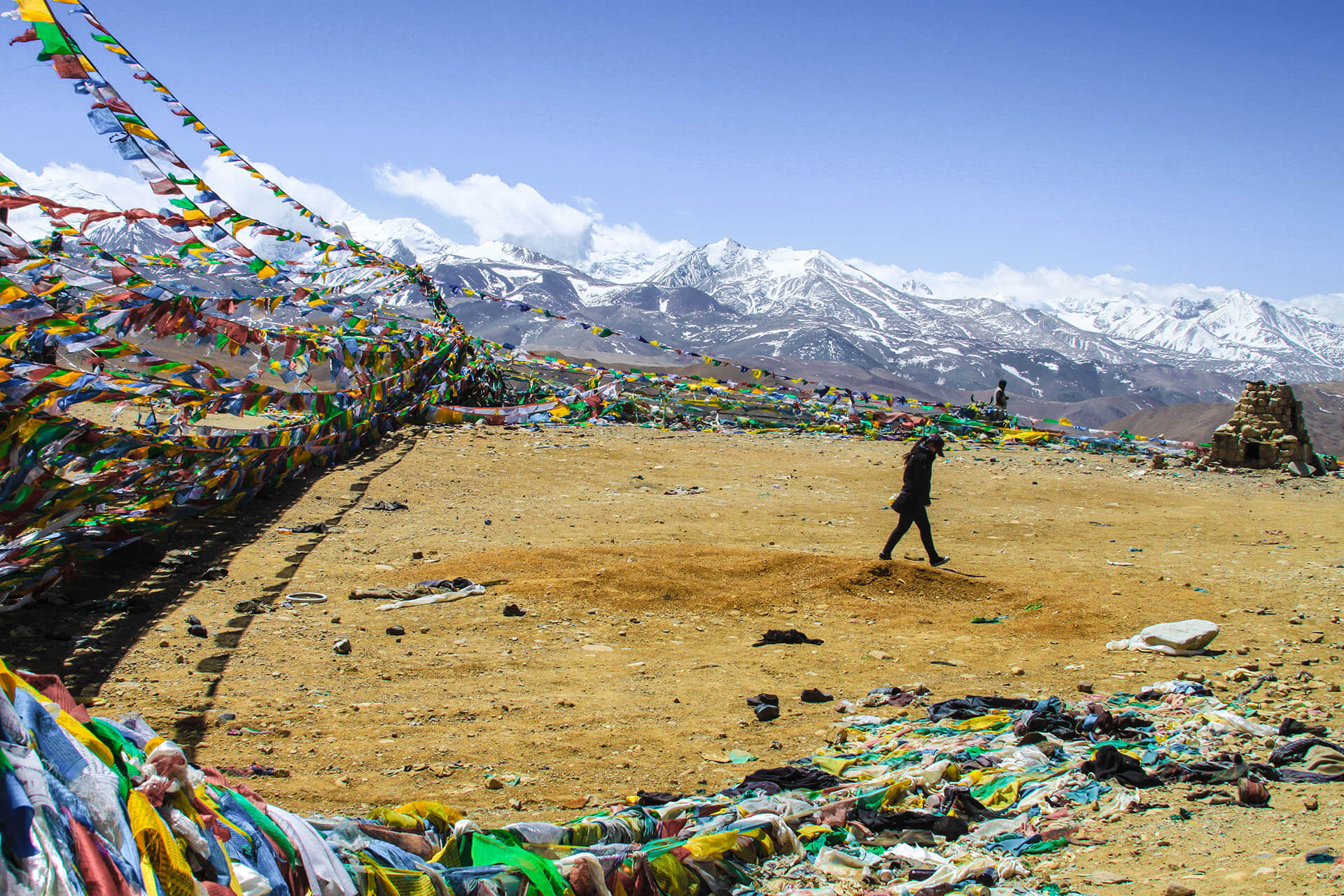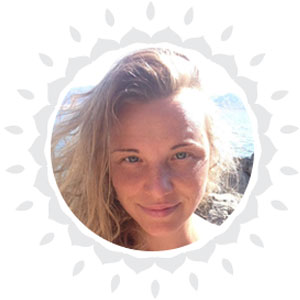This is one of our best tour, which includes main jewels of Tibet- the ancient Temples and traditional Buddhist arts of Central Tibet and, “snow jewel”, powerful wish fulfilling Mount Kailash, the lake of bliss and feminine nature Manasarovar, mystical and secret Kingdom Guge. Plus the advantages of the overland tours which bring the best of Tibet- high passes, glaciers, crystal clear turquoise lakes, snow capped ranges, sheltering valleys, covered by the field of barley, witnessing local nomadic life style.
The highlights of this tour
Lhasa is the capital of Tibet, the roof of the world. With reaches history which is still not fully uncovered therefore the treasure house of the Buddhist wisdom and tradition. The central point of Lhasa is Jokhang Temple which is 1300 year old, golden roofed building at the cen- ter of the Barkhor Market. The most sacred and active Tibetan temples, it was founded by Bhrikuti, King Songtsen Gampo’s Nepalese Bride, on a site chosen by his other wife (a Tang dynasty Chinese princess, Wenchang) as the principal geomantic power – place in Tibet. The Barkhor is the holiest of Lhasa’s Koras (devotional circumambulation circuits) and its most fascinating market around are shops, stalls, teahouses and cafes. The streets are filled with monks, pilgrims, street performers and hawkers. The atmosphere is an intoxicat- ing blend of the sacred, medieval, commercial and exotic. The Potala Palace towers over Lhasa and is an enduring landmark of Tibet. Little remains of the original structure built by Songtsen Gampo other than its foundations. After Lhasa was reinstated as the capital of Tibet in the 17th century, the Great 5th Dalai Lama began construction of the White Palace (built 1645 – 53) employing 7000 workers and 1500 artisans. Norbulinkha is a 40 – Hectare Park to the west of Lhasa town and was built as summer residence for the Dalai lamas in the 18th century.
Gyantse (3950m) is 254km from Lhasa. The drive is long, yet scenic across the Khamba la, Kora La (passes),along the shores of Lake Yamdrok Tso. Once an importanttrading town, Gyantse retains the feel of Old Tibet. The main temple of Pelkor Chode, the Tsuklakhang was built 1418 – 1425 AC by the 2nd prince of Gyantse. It was an eclectic academy with 16 dralsang (colleges) belonging variously to Sakya, Butonpa, Geluk and Kagyu schools. All the dralsang buildings have been destroyed, however the main assembly hall was preserved along with its remarkable (15th images and Murals). The top chamber is decorated with fantastic madalas in Sakya tradition. Also visit Kumbum within the same complex.
Mount Kailash. The most sacred mountain in the Tibetan Buddhist world is also considered by many to be the center of the universe. Uncannily symmetrical, this remote and remark- able peak is located in the far west of Tibet, 1200 km from Lhasa. Mt. Kailash (6714m) is not only geographically one of the most important mountains in Asia, it is also the source of four major rivers, namely, the Indus, Sutlej, Karnali and Tsang Po which nourish Asia with water. In Sanskrit Kailash means ‘luminous crystal’. Hindus believe Mt. Kailash to be the abode of Lord Shiva and his wife Parvati. Tibetan Buddhists call the mountain Kang Rin- poche, the ‘Jewel of Snow’, and regard it as the body mandala of Korlo Demchog and his consort, Dorje Phagmo (Cakrasamvara and Vajravarahi). A pilgrimage to this great sacred and magical landscape is the most precious of pilgrimages for both Tibetan and Indian peo- ple, a journey they hope to experience at least once in a lifetime.
Lake Manasarovar is the female principal and represents the wisdom aspect, meanwhile Mt. Kailash represents the male and Diamond (Vajra) aspect. In Hindu tradition Man- asarovar Lake is regarded to be the spirit of Brahma where all life is being born.
During the Lake kora beauty and endurance come together. Overcoming inner and outer difficulties become profoundly essential in such a powerful wisdom site.
Every sacred site is connected with a zodiac sign of the Tibetan calendar. Like Mt. Kailash has its “birth year” in the Hoarse sing – Lake Manasarovar has its power peak in the year of Sheep. It is said that the activity of the local deities are twelve fold present which results in a far higher blessing.
We have designed the completion of the Mt. Kailash kora and the arrival on Lake Man- asarovar to be on a full Moon. So the two main aspects of the tour are united.
Plus, the tour is especially beautiful in this early time of the year when it is crisp and pure. The nature in the holy region is very untouched with almost no people, moreover Lake Manasarovar is fully or partially frozen and there will also be snow along the Drolma La Pass (Mt Kailash). It is a journey for people who like the pure and deserted nature.
Kingdom Guge is said to be the highest of ancient kingdom located on the ridge of the Roof of the World- Tibet. Legend has it that in the first half of 20th century the Tibetan gov- ernment sent a soldier to Guge to collect taxes. However, a couple of days later the soldier was back, frightened. All he could see there was a world of sand. The government dropped the taxation plan. However barren, desolate and inaccessible the land might seem, the powerful Guge kingdom ruled over it for over 700 years from the 9th to 17th century. Alto- gether 16 kings ruled Guge. Yet, historical records reveal little about its rise and sudden demise. It was instead from some letters by western missionaries that people got to know more about the lost empire.The ruins are the only visible legacy Guge has left behind.The ruins extend from the mid-ridge of a hill 300 meters high at its peak and cover an area of 720,000 square meter. It is the second largest ruin in Tibet, after the Potala Palace in Lhasa. Archaeologists have unearthed 445 earthen and wooden structures, 879 caves, 58 blockhouses (a kind of fortification building), four secret tunnels, 28 stupas (traditional pagoda-shaped Buddhist monuments), granaries and weaponry storehouses.
ITINERARY
The tour runs from May through mid of September, please request more detailed information

Arrive in Lhasa
Exploring Lhasa and surroundings
Driving to Gyantse
Exploring Gyantse, driving to Sakya
Exploring Sakya
Driving from Sakya to Saga
Driving from Saga to Darchen (14h)
Starting from Darchen early morning our Kailash kora (circumambulation around the mountain) Is a good 7-9 hours of an easy hike towards the Northern face of the mountain. The second day we are staying on the North face, resting, meditating hiking closer all the way to the glaciers, connecting with the power fields of the mountain and its deities. The third day is the hardest day of the kora with the Dolma la Pass 5636m. Overnight at the Dzultripuk Monastery camping, exploring the famous Milarepa cave.
End of the kora- an easy few hours hike, lunch in Darchen and drive to Guge Kingdom (few hours till the end of the day)
Exploring the Guge Kingdom- it’s sacred labyrinths and caves. Group meditation on connecting with the place and enhancing the energy.
Honestly, is my favorite place on earth- the blissful Lake Manasarovar. We can choose either to make kora around the lake (2 days) or to stay at the shore and deepening our connection with the power place: meditating on awakening the feminine blissful wisdom qualities, doing breathing exercises, yoga, hot springs and sun bathing.
Driving from lake Manasarovar to Saga
Driving from Saga with the stop in Shigatse and then back to Lhasa
That is the end of the tour. You are welcome to extend your adventure with optional travel to the other areas of Tibet or Nepal or fly back home 🙂
TOUR LEADER AND TOUR OPERATOR
Roger Pfister
Tour Operator
Roger Pfister, Swiss, born in 1960 has been based in Boudhanath, Kathmandu in Nepal since 1995. During this time he has owned and operated Snow Jewel, leading expeditions... Roger Pfister, Swiss, born in 1960 has been based in Boudhanath, Kathmandu i...
Read morePRICE FORMATION
INCLUDED: Private transport; Tibetan and English speaking guides; Road permit; Accommodations; National parks fees
EXCLUDED: All meals and personal expenses; Visa fees (paid separately); Entry fees in monasteries
Additional expenses which may arise due to circumstances beyond control of RMT such as flight cancellations or delays, landslides, strikes etc; All meals and personal expenses
Of course we cannot determine or foresee your spending behavior, however, with a moderate way of spending you will need about 150 CNY / day, this will cover food, simple accommodation & entrance fees (Grass land 65Y/ Kailash 300Y). A porter on the kora will cost extra 120-150 CNY / day.
PLEASE NOTE
We will not be responsible for extra cost incurred by landslides, road blockages and other weather-related or political problems.
You are responsible for your own health. Our arrangements are designed to allow sufficient time for acclimatisation.
Accommodation will occasionally be in shared rooms (small dormitories). During the Kailash kora accommodation will be very simple. We assume you are prepared to share rooms/tents with others, regardless of gender.
We reserve the right to increase the tour price should the Euro in relation to the Chinese Yuan (RMB) depreciate significantly.
VISA AND PASSPORT INFORMATION
TIBET GROUP VISA
Will be obtained in Kathmandu or at the arrival in Lhasa. In that case, you would have to obtain a Chinese visa in your home country. For the group visa, we need one passport photo and a filled in visa form. Visa- Fee US$ 114 in cash, payable upon arrival when handing over the passport. (US citizens must pay US$ 198.)

Please fill up this short form and we’ll contact you with the details of the tour
WHY I SHOULD CHOOSE THIS TRIP
Submit your review | |







